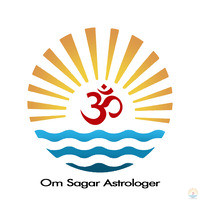Indian astrology, also known as Vedic astrology or Jyotish Shastra, is a profound and ancient system of celestial forecasting and guidance that has been practiced in India for thousands of years. This astrological tradition is deeply embedded in Indian culture and spirituality, and it continues to play a significant role in many people’s lives, including those in Guntur.

Definition of Indian Astrology
Indian astrology is a system that interprets the positions and movements of celestial bodies—such as planets and stars—relative to Earth, to gain insights into human affairs and natural phenomena. Unlike Western astrology, which primarily uses the tropical zodiac and focuses on the apparent movement of the sun, Vedic astrology is based on the sidereal zodiac, which takes into account the fixed positions of stars.
Key aspects of Vedic astrology include:
Birth Chart (Janam Kundali): The fundamental tool in Vedic astrology is the birth chart or Janam Kundali, which is a map of the sky at the exact moment and location of an individual’s birth. This chart reveals the positions of the planets, the moon, and the sun, and serves as the basis for astrological analysis.
Planetary Periods (Dasha): Vedic astrology employs a system of planetary periods called Dashas, which helps astrologers predict the timing of various life events. Each Dasha corresponds to a particular planet and influences the individual’s life during that period.
Houses and Aspects: The birth chart is divided into twelve houses, each representing different areas of life, such as career, relationships, and health. The interactions or aspects between planets, as well as their placement in these houses, provide insights into various aspects of an individual’s life.
Remedies: Vedic astrology often involves recommending remedies to address imbalances or challenges identified in the birth chart. These remedies can include the use of gemstones, mantras, rituals, or lifestyle changes to harmonize cosmic influences.
Origins of Indian Astrology
The origins of Indian astrology trace back to ancient times, with its roots deeply embedded in the Vedic texts. The history of Vedic astrology can be summarized as follows:
Ancient Vedic Texts: The earliest references to astrology in India are found in the Vedic texts, particularly the “Vedangas” and “Brahmanas,” which are ancient scriptures associated with the Vedas. These texts, dating back to around 1500 to 500 BCE, include astrological knowledge used for various purposes, including timing of rituals and understanding celestial phenomena.
Classical Texts: The classical period of Vedic astrology saw the compilation of key texts that form the foundation of the discipline. Notable among these is the “Brihat Parashara Hora Shastra,” attributed to Sage Parashara, which is considered one of the most comprehensive and authoritative texts on Vedic astrology. Another important text is the “Jataka Parijata” by Vaidyanatha, which further elaborates on astrological principles.
Development and Influence: Over the centuries, Vedic astrology evolved and was influenced by various cultural and historical developments, including interactions with Greek and Persian astrological traditions. The synthesis of these influences enriched Vedic astrology, leading to the system practiced today.
Modern Practice: In contemporary times, Vedic astrology continues to be widely practiced in India and among the Indian diaspora worldwide. In cities like Guntur, Indian astrologers use traditional techniques combined with modern tools to offer personalized guidance and remedies based on an individual’s birth chart.
BLOG
Top Astrologer In Bhopal
Top Astrologer in Bhopal
Love Problem Solution In Dadar
Love Back expert Astrologer in faridabad
Best Tantrik
Top Astrologer

